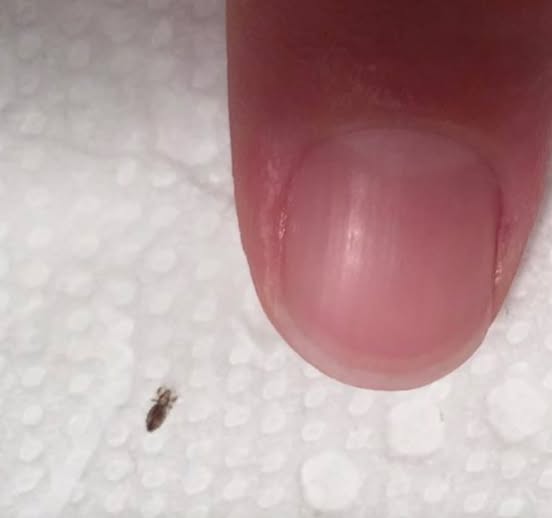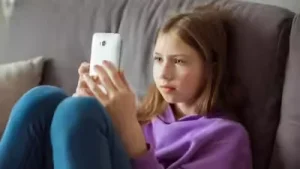If you find this bug in your hair. How to get rid of them and stop them coming back

Head lice are every parent’s dreaded visitor—tiny, relentless bugs that turn a peaceful household into an itchy battlefield.
These pests often show up when school is in session, spreading fast through close contact or shared personal items. If you’ve dealt with lice before, you know it’s a time-consuming process filled with combing, treatments, and lots of patience.
Lice are small, wingless insects that live on the scalp and feed on blood. They lay sticky eggs (nits) near the scalp, making them hard to remove. While lice don’t spread disease, their presence causes intense itching and discomfort. They can also survive off the scalp for up to 48 hours, making thorough cleaning essential.
To get rid of lice, start with a medicated shampoo or lotion specifically made for lice treatment. Follow the product instructions carefully, ensuring proper application and timing. This step kills live lice but often leaves behind nits, which must be removed manually.
Use a fine-toothed nit comb on wet hair to comb out nits and dead lice. Work in small sections and wipe the comb after each pass. This step is crucial to prevent reinfestation. Most treatments need to be repeated after 7–10 days to catch any newly hatched lice before they lay more eggs.
Cleaning your home is equally important. Wash clothing, bedding, and accessories worn in the past two days in hot water. Items that can’t be washed should be sealed in plastic bags for two weeks. Vacuum areas where the infected person sat or lay down to remove stray lice.
To prevent future outbreaks, teach kids not to share personal items like combs or hats. Regularly check their scalp, especially during school months, and keep long hair tied back. If lice persist or cause infection, consult a doctor for prescription treatment. With consistency, lice can be conquered.
Home Remedies for Head Lice: What Works?
When dealing with lice, you should keep a number of things in mind. Sometimes it may be enough to comb out the nits, nymphs, and adult lice. Other times you may need to turn to some over-the-counter treatments.
While lice can spread, they don’t carry disease, and they don’t mean that you or your kids are in any way “unclean.”
If your child just got back from an overnight stay with friends and the parent in charge told you that one of the kids has lice, there is no need to panic. Chances are good that you’ve caught the problem early enough. You can just comb out your child’s hair every morning and evening for three weeks.
You can also combine the combing with some easy home treatments. Nearly all home remedies rely on some method to suffocate the lice. Using home remedies that work is probably preferable to putting harsh chemicals on your child’s head.
Read on to find out what home remedies to try and what to avoid.
Try wet-combing
Wet-combing is a traditional way of removing lice from the hair. According to the British Medical JournalTrusted Source, the method has benefits such as making the lice more visible, distinguishing them from dandruff, and being affordable.
Wet-combing involves spraying conditioner on wet strands of hair, using a fine-toothed comb, and, in some cases, a magnifying glass to clearly examine each strand of hair and remove the individual lice.
Although the wet-combing method can be effective, it’s also time-consuming and requires some patience to complete. If you try it, allow ample time and consider some entertainment options beforehand for your child.
Apply dimethicone
Dimethicone is a common ingredient in skin care products that is also highly effective against head lice as a 4% silicone gel.
Dimethicone is not an insecticide. Rather, it works by dehydrating and suffocating the lice and rendering them unable to feed or survive. Due to this action, lice are less likely to build an immunity to dimethicone in the same way that they are able to with insecticides.
Smother the lice
Here are some of the natural “suffocating” or “smothering” treatments that work reliably well. They work best if you follow the instructions.
It’s important to note that some experts believe that it’s actually the combing that does the work — the “suffocating” treatments just stun the lice and make them slower and easier to catch on the comb.
To use this technique, first coat the hair with olive or almond oil. (Vaseline and mayonnaise are not recommended — they are unnecessarily messy, and both can be difficult to wash out.)
Some people suggest coating the comb instead of the hair — re-applying the oil as needed. You may have to try both methods to see which works best for you.
Separate the hair into small sections as you work, and use a hair clip to move them out of the way. Do this under a good light so you can see what you’re doing. Rinse out the comb often under running hot water.
Once you’ve completely combed your child’s hair, wash their hair with their regular shampoo, rinse, and repeat. Then dry their hair.
Make sure you wash all the towels you used and clean out the lice comb. Soak the comb in a 10 percent bleach solution or 2 percent Lysol solution for 30 minutes, and then rinse it very well. As an alternative, you can soak the comb in vinegar for 30 minutes or boil it in water for 10 minutes.
Follow this procedure every day for a week. Then, for the next two weeks, check by combing every night to make sure the lice are gone.
Treat the lice with essential oils
A number of essential oils have been shown to be effective — along with combing — in eliminating head lice.
Essential oils are never ingested. In fact, some are toxic. Before you use any essential oil, always dilute them with a carrier oil and put a small drop of the diluted mixture on the back of your child’s hand. If there is no reaction, the essential oil should be safe to use.
There isn’t enough research to be sure that essential oils are safe for children.
Though pretty rare, some kids have allergic reactions to these oils — usually tea tree oil. If your child is allergic to one, move on to the next oil on the list. The oils that have shown effectiveness are:
tea tree oil
lavender oil
neem oil
clove oil
eucalyptus oil
aniseed oil
cinnamon leaf oil
red thyme oil
peppermint oil
nutmeg oil
Mix 2 ounces of olive oil with 15 to 20 drops of the essential oil. Apply this mixture to the scalp using cotton balls. Leave it on the scalp and hair overnight — at least 12 hours. Comb out and shampoo, rinse, and repeat.
An alternative approach is to mix the 15 to 20 drops of essential oil in 4 ounces of rubbing alcohol. Place the mixture in a spray bottle and saturate the hair with it. Again, leave it on for at least 12 hours. Once the lice have been eliminated, the alcohol spray can be used as a preventive treatment.
Remember — combing out the hair is absolutely essential to remove the lice and their eggs.
Clean around the house
If you or your child has lice, you may be tempted to go on a whirlwind cleaning spree around the house, but you can rest assured that a full house decontamination often isn’t necessary with lice.
Lice won’t live far from the scalp, and nits usually won’t hatch at room temperature. So save that deep cleaning around the house for another time.
But you may want to clean or wash anything that has been in close contact with the person who has lice, such as hats, pillowcases, brushes, or combs. Put beloved stuffed animals and other non-washable items into a plastic bag.
Wash any lice-infested item in hot water that is at least 130°F (54°C), put it in a hot dryer for 15 minutes or more, or placing the item in an air-tight plastic bag and leaving it for two weeks to kill the lice and any nits.
You can also vacuum floors and furniture where lice may have fallen.
Avoid these products and methods
Here are the things the Centers for Disease Control and Prevention (CDC)Trusted Source recommends that you DON’T do when getting rid of lice:
- Don’t use extra amounts of any recommended or prescribed dose of lice medication to try to treat the lice “faster.” Excessive dosages can be dangerous and may cause severe damage.
- Avoid getting any medication for lice in the eyes. If contact with the eyes occurs, be sure to flush them out.
- Don’t repeat the same lice treatment more than two or three times. If you repeat a medication treatment too many times, you or your child may build a resistance to the medication, or an alternative may have to be used.
- Don’t use more than one head lice medication at the same time. Using more than one treatment at a time won’t work to kill the lice faster, and it can cause more harm than good.
- Don’t fumigate the house or living area where an individual who has head lice has been. Fumigation isn’t necessary to kill lice and may be toxic to others and to pets.
- Avoid using conditioner. Conditioner acts as a barrier for lice medication and stops it from sticking properly to the hair shaft.
- Don’t use lindane shampoo as a first-line treatment for children. The American Academy of Pediatrics (AAP) no longer recommends it, as overuse and misuse can be toxic to the brain or parts of the nervous system. The AAP recommends that Lindane only be used when other treatments have failed.
Outlook
When treating lice, it’s crucial to follow directions carefully and exactly. Failing to follow directions for treatment with medication is one of the leading causes of re-infestation.
Currently, there isn’t enough evidence on home remedies such as mayonnaise or nit-removal facilities as effective lice treatments, so the CDC recommends following your doctor’s instructions for treatment and letting them know if treatment doesn’t appear to be working.
